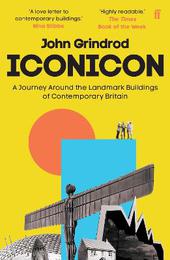
|
Iconicon: A Journey Around the Landmark Buildings of Contemporary Britain
Paperback / softback
Main Details
| Title |
Iconicon: A Journey Around the Landmark Buildings of Contemporary Britain
|
| Authors and Contributors |
By (author) John Grindrod
|
| Physical Properties |
| Format:Paperback / softback | | Pages:464 | | Dimensions(mm): Height 198,Width 129 |
|
| Category/Genre | Architecture
History of architecture |
|---|
| ISBN/Barcode |
9780571348145
|
| Classifications | Dewey:720.94109045 |
|---|
| Audience | | General | | Tertiary Education (US: College) | | Professional & Vocational | |
|---|
| Edition |
Main
|
|
Publishing Details |
| Publisher |
Faber & Faber
|
| Imprint |
Faber & Faber
|
| NZ Release Date |
16 May 2023 |
| Publication Country |
United Kingdom
|
Description
Barratt homes. Spectacular skyscrapers. Millennium monuments. City centre apartments. Out of town malls. These icons of our age, be they modest or monumental, present us with a liv-ing history of Britain. They are both symbols of the ways we have lived, and reminders of the political, financial and social forces that have shaped our modern landscape. In Iconicon, John Grindrod takes us on a captivating journey around these landmark buildings, from 1980 to the present day. Along the way he encoun-ters the architects and planners of these national icons, as well as the people who have lived and worked within their walls. From the Right to Buy to Gen-eration Rent, and from postmodernist exuberance to Passivhaus eco efficiency, this is at once a revelatory architectural grand tour and an end-lessly engaging and witty piece of social history.
Author Biography
ohn Grindrod is the author of Concretopia: A Journey Around the Rebuilding of Postwar Britain (Old Street, 2013) and Outskirts: Living Life on the Edge of the Green Belt (Sceptre, 2017) which was shortlisted for the Wain-wright Prize. @Grindrod / johngrindrod.co.uk
Reviews'Wonderful . . . a new way of looking at modern Britain.', Independent on Sunday, on CONCRETOPIA 'About the best history of the intersection of post-war architecture and politics that you could hope for.', Owen Hatherley, on CONCRETOPIA
|